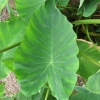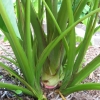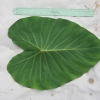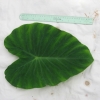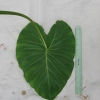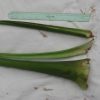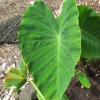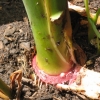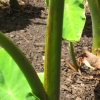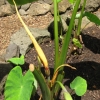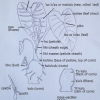Use As Food
An excellent māla (upland) poi taro.
Distribution
Planted extensively in Kona, Hawai‘i, where it probably covers a greater acreage than any other variety, mainly under māla (upland) culture.
General Characteristics
Short to medium in height, stiffly erect, slender, maturing within 12 to 18 months, producing from 5 to 10 ‘ohā; distinguished by lilac-purple ‘i‘o kalo (Corm) flesh and dark green Hā (Petiole).
Ha (Petiole)
60 to 75 cm. long, dark green slightly tinged with reddish-brown at the top (apex), a dark purple ring at kōhina (base) with light purplish-lilac for 3 to 4 cm. above, with a narrow, indistinct lihi (stem edge) colored reddish to whitish.
Lau or Lu'au(Leaf Blade)
40 to 50 cm. long, 25 to 35 cm.wide, 30 to 40 cm. from tip to base of sinus (māwae), arrow head shaped, drooping, dark green with faint pinkish cast; margins slightly wave-like (undulate); piko light green to faint brownish; round leaf section (lobes) acute with fairly deep, wide lihi māwae (sinus).
'I'o kalo (Corm)
Flesh lilac-purple with darker purplish fibers; skin light pink.
Pua (Flower)
Hā (peduncle) dark green; flower cover (spathe) 18 to 23 cm. long, the lower tubular portion 3 to 4 cm. long, dark green, the upper portion clear, deep yellow, open near constriction (skinny part of flower) only upon maturity; spadix (spike of flower) 7 to 8 cm. long, the sterile appendage (tip of flower's spike) 5 to 8 mm. long.
Remarks
This variety is said to grow well in tough conditions and is a good yielder.

